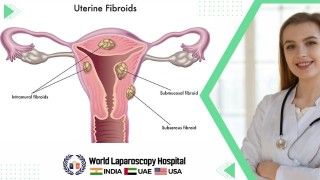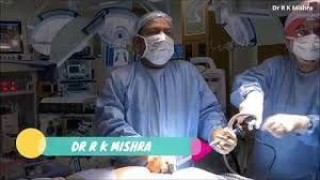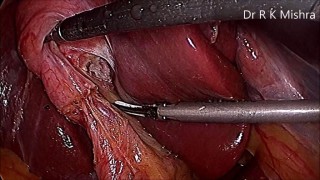Laparoscopic Repair of Incisional Hernia: A Detailed Surgical Procedure by Dr. R.K. Mishra
Add to
Share
1,803 views
Report
1 year ago
Description
https://www.laparoscopyhospital.com/SERV01.HTM Introduction The evolution of minimally invasive surgery has been significantly bolstered by the introduction of laparoscopic incisional hernia repair. Renowned for its shorter recovery periods and reduced complication risks, this method has garnered widespread acclaim in the surgical community. Dr. R.K. Mishra, a distinguished authority on laparoscopic techniques, presents an in-depth, step-by-step walkthrough of this sophisticated surgical procedure. Understanding Incisional Hernias Incisional hernias are characterized by the protrusion of tissues, like the intestine, through a weakened segment of the abdominal muscles, often occurring at previous surgical incision sites. These hernias can lead to discomfort, pain, and further complications, making surgical repair a necessity. Preoperative Considerations Prior to the procedure, a comprehensive patient evaluation is paramount. This encompasses a review of the patient's medical history, a detailed understanding of the hernia's characteristics, and devising a surgical strategy. Utilizing imaging techniques such as CT scans or MRIs is crucial for assessing the hernia's dimensions and precise location. The Laparoscopic Approach The laparoscopic repair of an incisional hernia involves several essential steps: 1. Anesthesia and Patient Positioning: Administering general anesthesia and ensuring correct patient positioning are vital for achieving optimal access and visibility during the surgery. 2. Trocar Placement: The procedure begins with making small incisions for the insertion of trocars, which act as channels for the surgical tools and the laparoscope, a slender device equipped with a camera and light. 3. Exploration and Adhesiolysis: A meticulous examination of the abdominal cavity is conducted, followed by the dissection of adhesions to release the herniated tissue. 4. Hernia Sac Reduction: The protruding tissues are carefully repositioned into the abdominal cavity. 5. Mesh Placement: A synthetic mesh is strategically positioned over the hernia defect and secured using sutures or tacks, reinforcing the weakened area and minimizing the risk of recurrence. 6. Closure and Postoperative Care: The surgery concludes with the closure of the incisions, followed by a focused postoperative care regimen aimed at pain management, infection prevention, and monitoring for any potential complications. Advantages of Laparoscopic Repair The laparoscopic method offers several advantages over traditional open surgery: - Reduced Postoperative Pain: The smaller incisions result in less discomfort post-surgery. - Shorter Hospital Stay: Patients typically enjoy a faster recovery. - Decreased Risk of Wound Infections: The minimal incision size helps lower infection risks. - Enhanced Cosmetic Results: The minimal invasiveness of the procedure results in smaller scars. - Quicker Resumption of Daily Activities: Patients can return to their normal routines sooner. Conclusion Dr. R.K. Mishra's detailed guide on laparoscopic incisional hernia repair showcases the progressive strides in surgical methodologies. Embracing these minimally invasive techniques allows surgeons to provide a safer, less painful, and more efficient surgical alternative. The continuous advancements in technology and surgical practices hold great promise for further improving patient care in laparoscopic surgery.
Similar Videos






